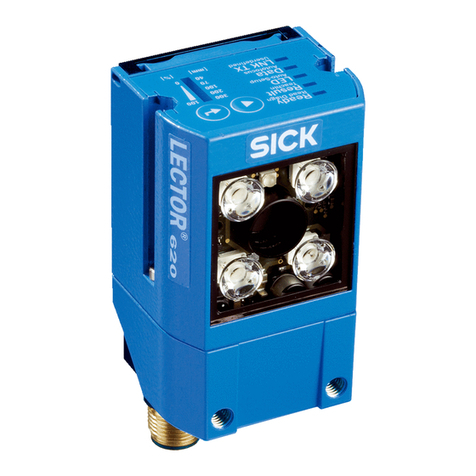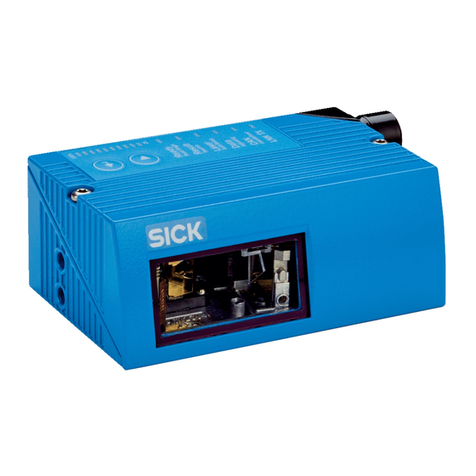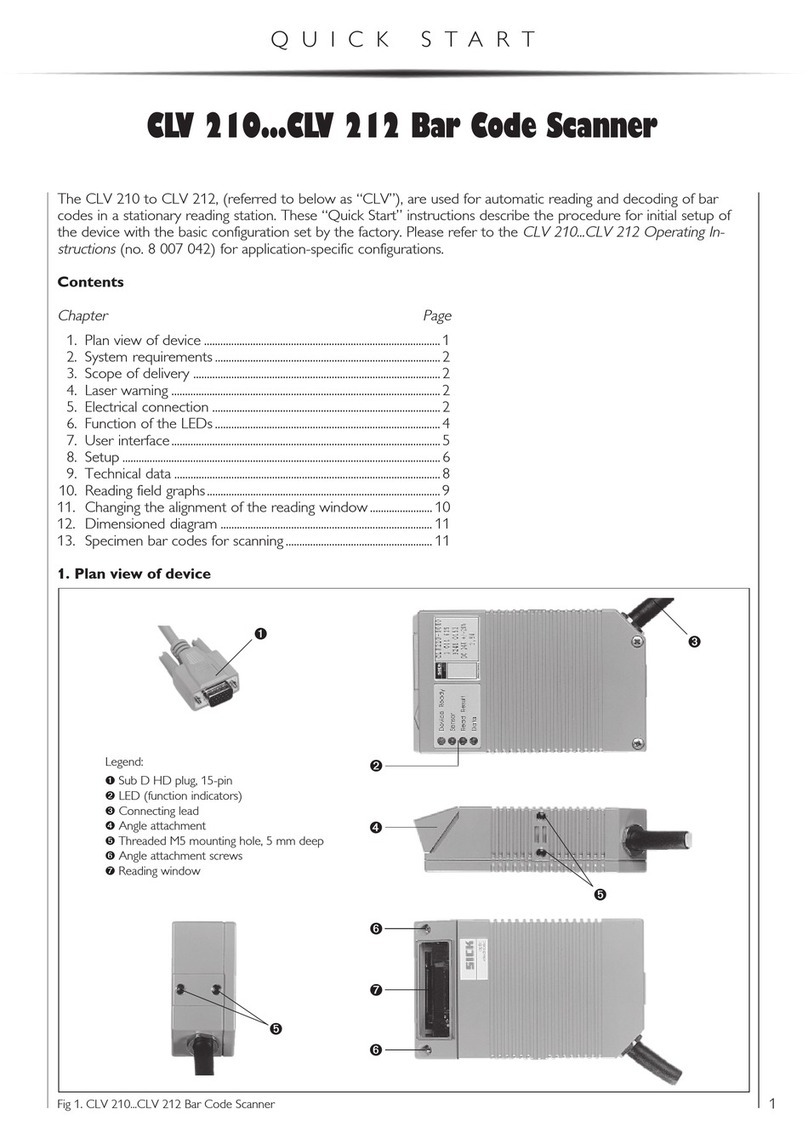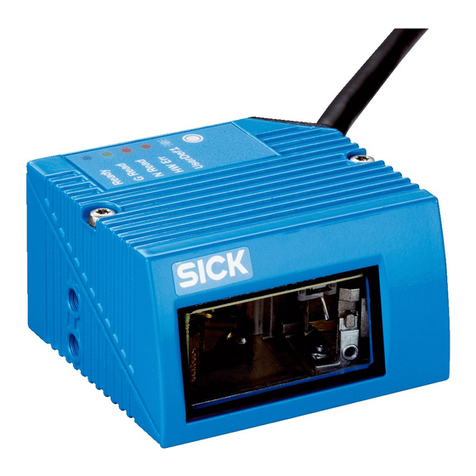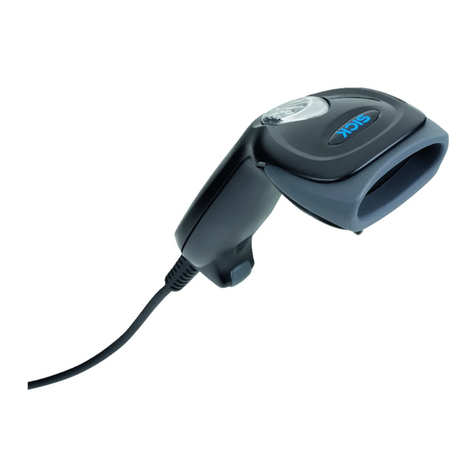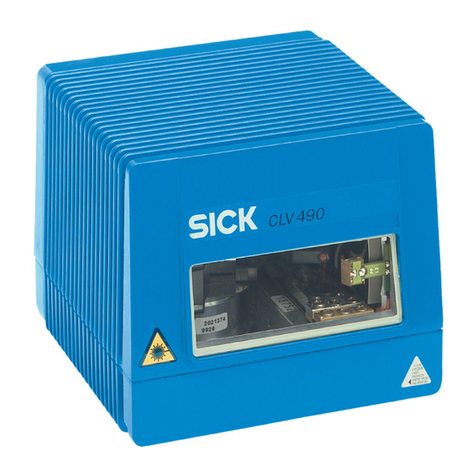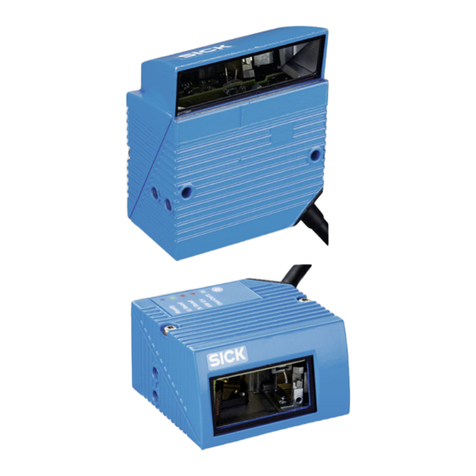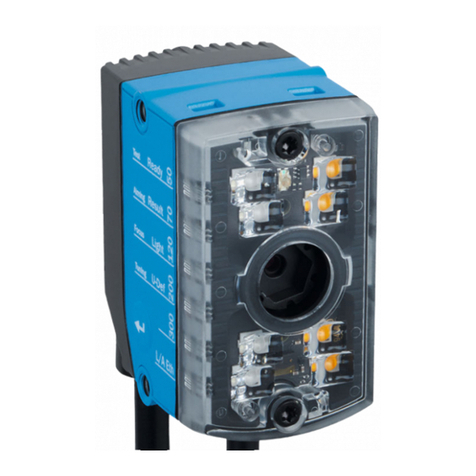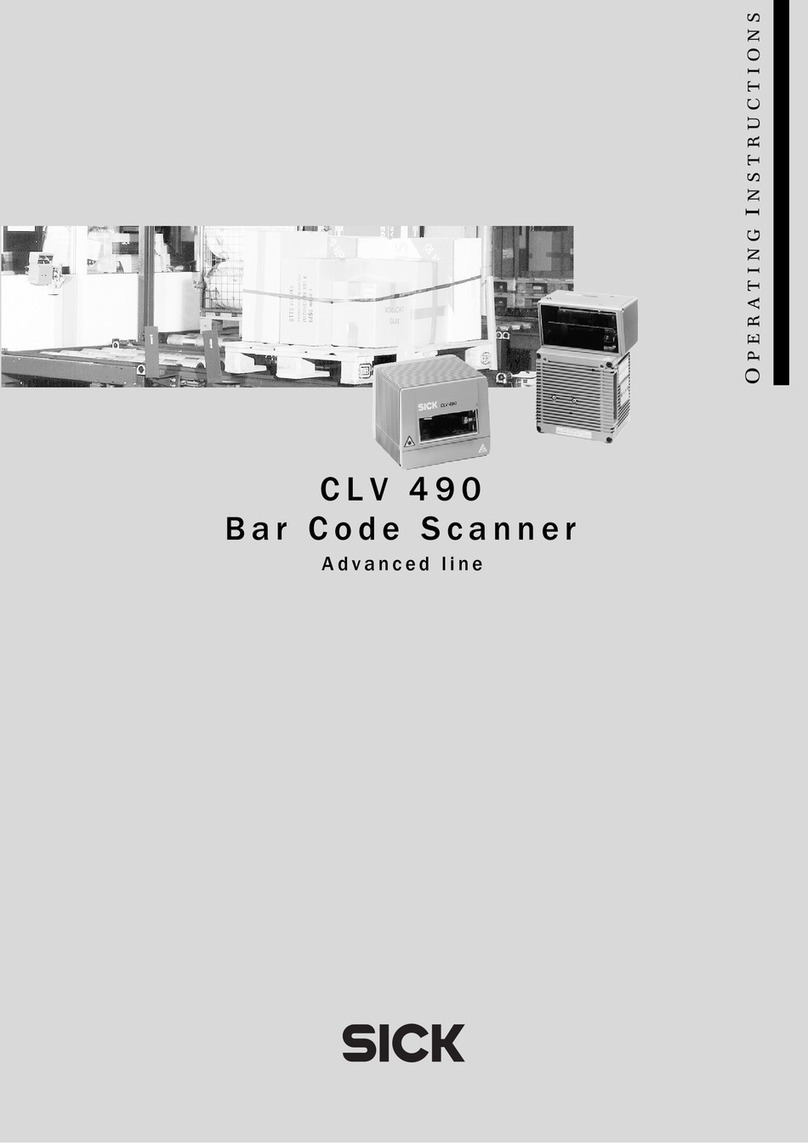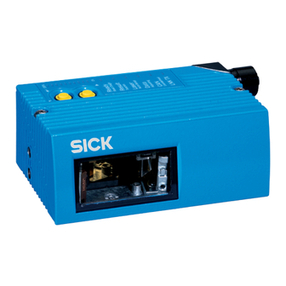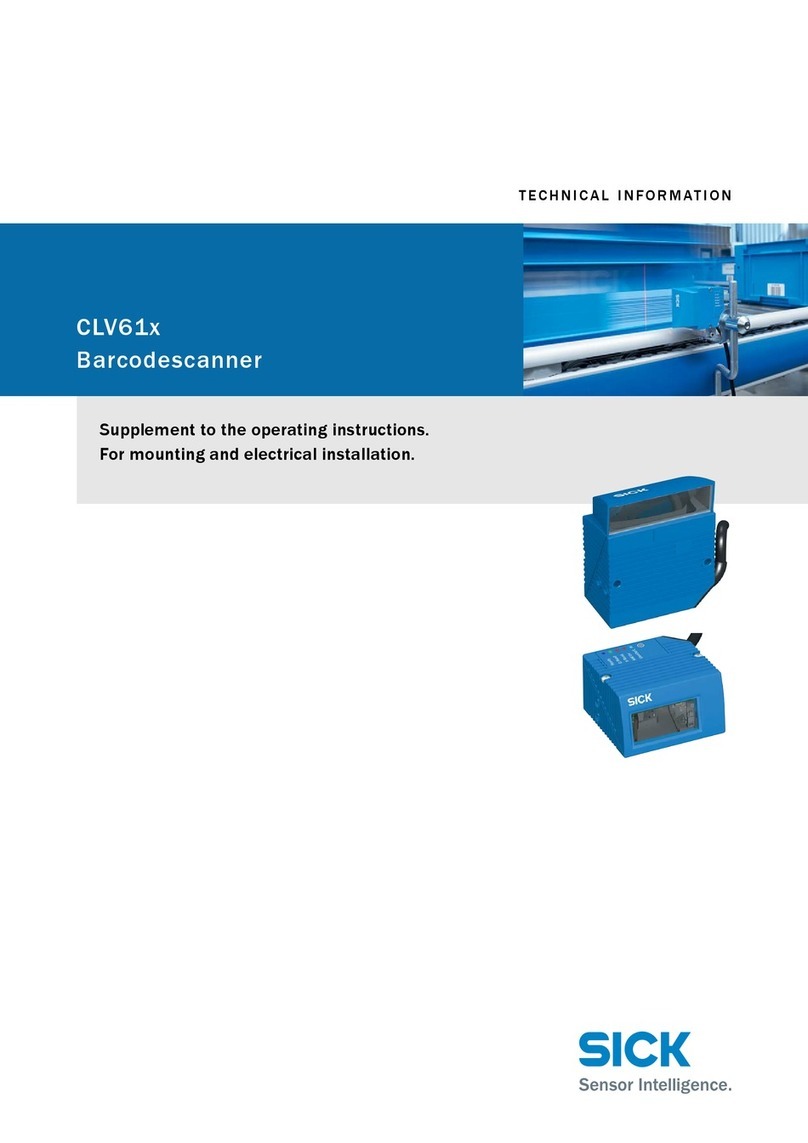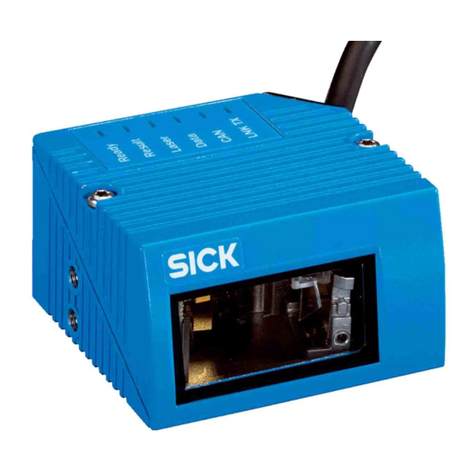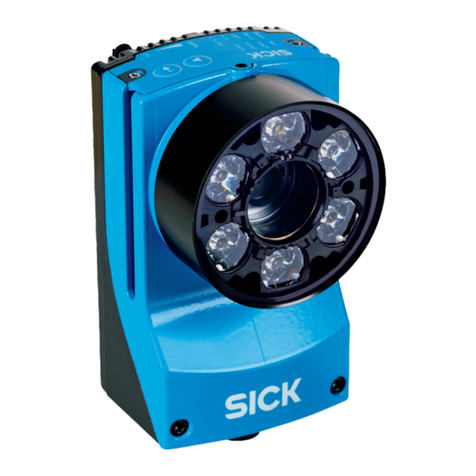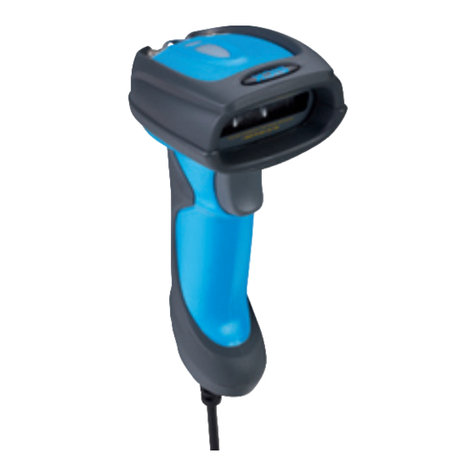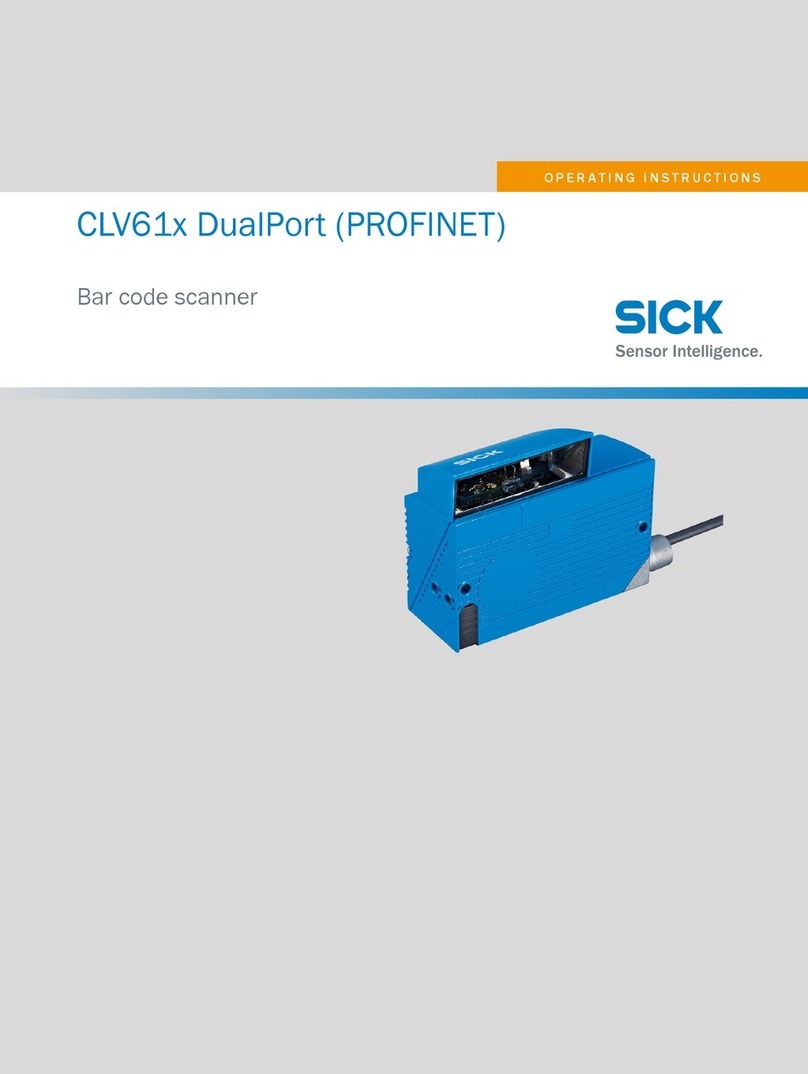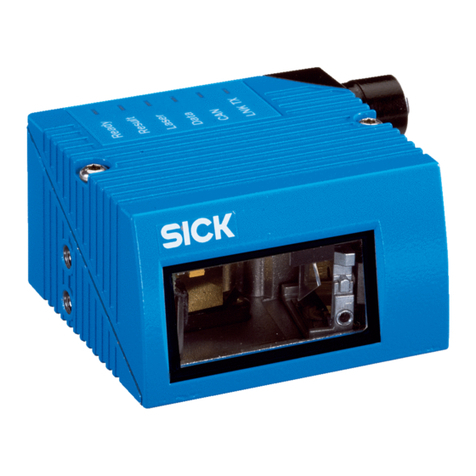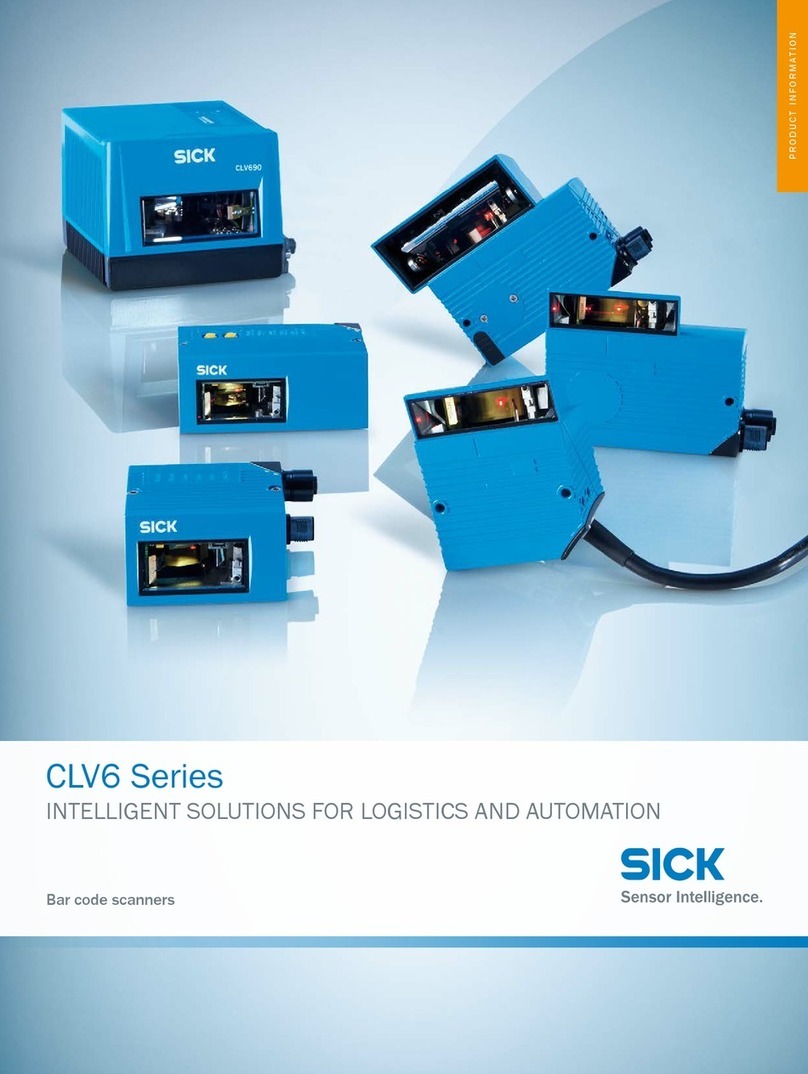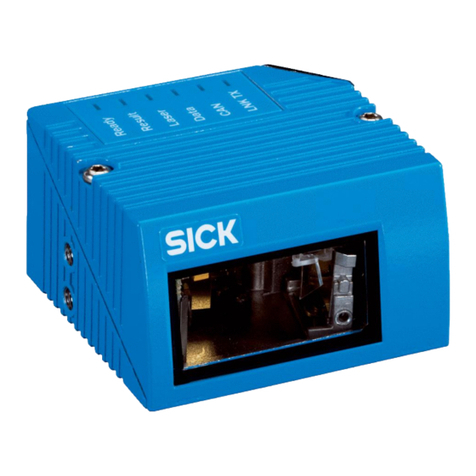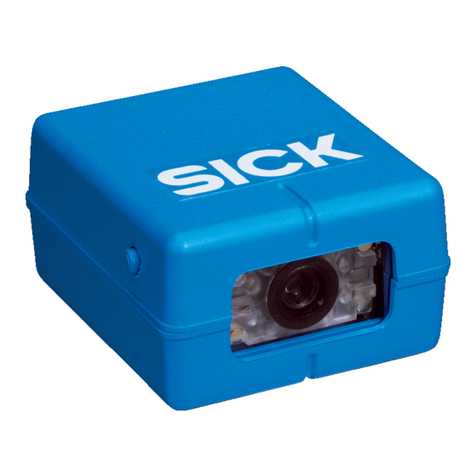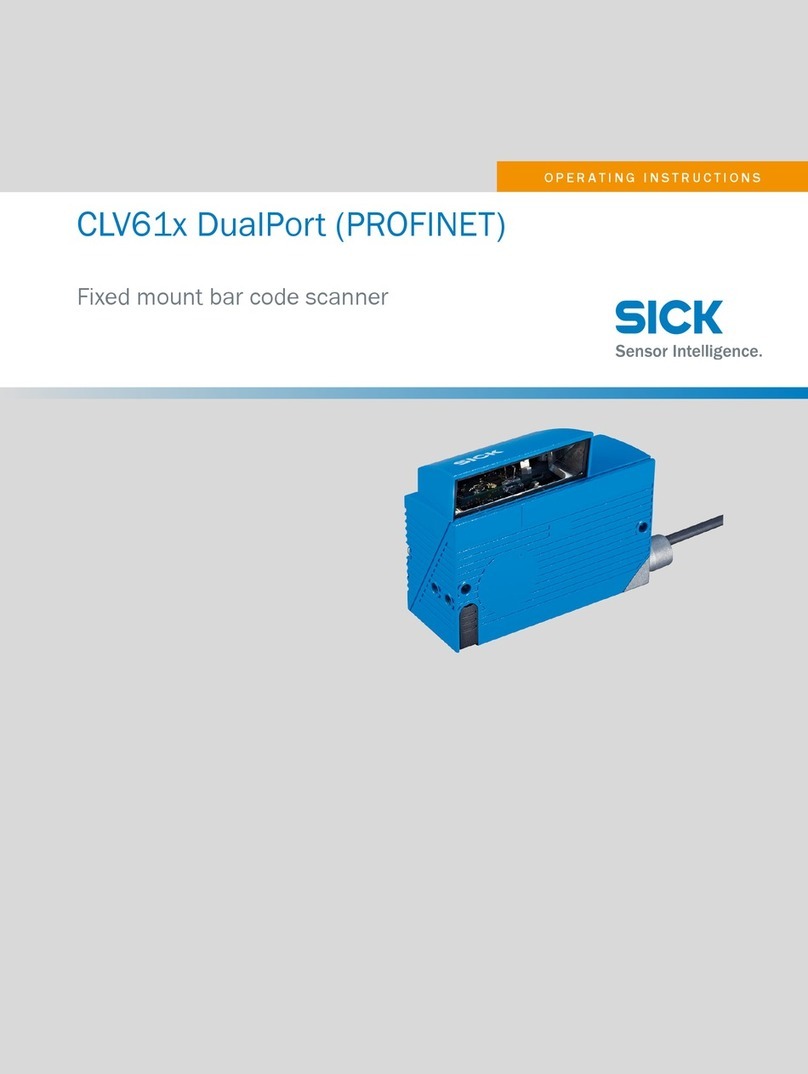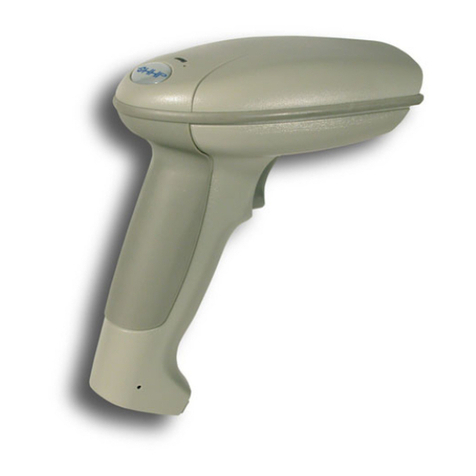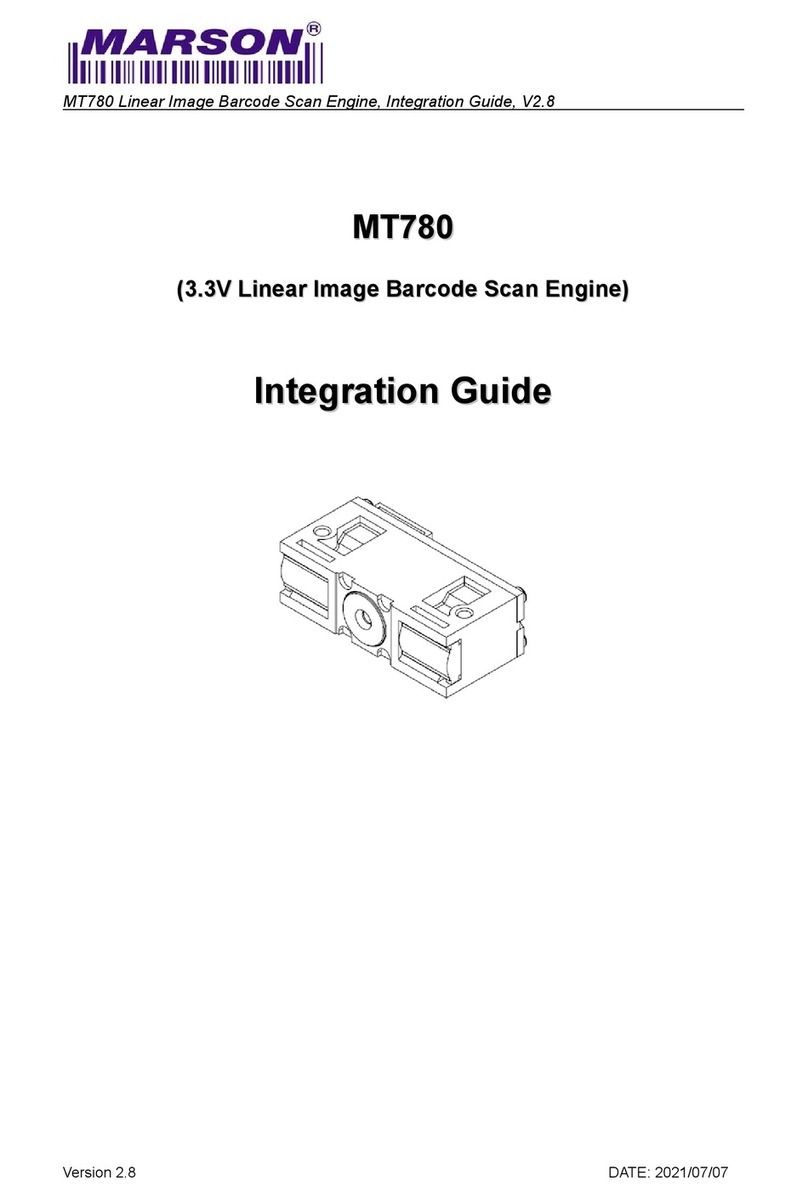
Operating Instructions
CLV 480 Bar Code Scanner
8 010 080/O824/10-02-2005 ©SICK AG · Division Auto Ident · Germany · All rights reserved I-5
Contents
Table of contents
1 Notes on this document............................................................................................ 1-1
1.1 Purpose ....................................................................................................................................... 1-1
1.2 Target audience........................................................................................................................ 1-1
1.2.1 Mounting, electrical installation, maintenance and replacement.................... 1-1
1.2.2 Startup, operation and configuration......................................................................... 1-1
1.3 Information content................................................................................................................. 1-1
1.4 Symbols....................................................................................................................................... 1-2
2 Safety information....................................................................................................... 2-1
2.1 Authorized users ...................................................................................................................... 2-1
2.1.1 Mounting and maintenance .......................................................................................... 2-1
2.1.2 Electrical installation and replacement ..................................................................... 2-1
2.1.3 Startup, operation and configuration......................................................................... 2-1
2.2 Intended use.............................................................................................................................. 2-1
2.3 General safety instructions and protection measures .............................................. 2-2
2.4 Quick stop and quick restart................................................................................................ 2-4
2.4.1 Stopping the CLV............................................................................................................... 2-4
2.4.2 Restarting the CLV............................................................................................................ 2-4
2.5 Environmental information....................................................................................................2-4
2.5.1 Power requirements.........................................................................................................2-4
2.5.2 Disposal after removal from service.......................................................................... 2-4
3 Product description .................................................................................................... 3-1
3.1 Design .......................................................................................................................................... 3-1
3.1.1 Scope of delivery............................................................................................................... 3-1
3.1.2 Variants................................................................................................................................. 3-1
3.1.3 System requirements for stand-alone configuration........................................... 3-1
3.1.4 Product features and functions (overview) ............................................................. 3-3
3.1.5 Design ................................................................................................................................... 3-5
3.2 Method of operation............................................................................................................... 3-6
3.2.1 Event-controlled dynamic focus control ................................................................... 3-7
3.2.2 Reading modes.................................................................................................................. 3-7
3.2.3 Scan procedure variants................................................................................................ 3-8
3.2.4 Additional components ................................................................................................... 3-9
3.3 Indicators and control elements ........................................................................................ 3-9
3.3.1 Control elements............................................................................................................... 3-9
3.3.2 Function of the LEDs........................................................................................................ 3-9
4 Installation..................................................................................................................... 4-1
4.1 Installation sequence ............................................................................................................. 4-1
4.2 Preparations............................................................................................................................... 4-1
4.2.1 Required components..................................................................................................... 4-1
4.2.2 Required accessories...................................................................................................... 4-1
4.2.3 Required auxiliary parts .................................................................................................. 4-1
4.2.4 Replacing the laser warning label ............................................................................... 4-2
4.2.5 Selecting the mounting location .................................................................................. 4-2
4.2.6 Mounting accessories ..................................................................................................... 4-3
4.2.7 Distance between the CLV and the bar code........................................................ 4-4
4.2.8 Count direction of the code position CP and code angle CW.......................... 4-6
4.3 Mounting and adjusting the device................................................................................... 4-7
4.3.1 Mounting the CLV.............................................................................................................. 4-7
4.3.2 Adjusting the CLV .............................................................................................................. 4-7
4.3.3 Help functions for adjusting the CLV ......................................................................... 4-9
4.4 Mounting the external components................................................................................4-10
4.4.1 Mounting the AMV/S 60 Connection Module......................................................4-10
4.4.2 Mounting the external reading pulse sensor........................................................4-10
4.4.3 Installing incremental encoder...................................................................................4-11
4.4.4 Mounting the sensors for detecting the object distance.................................4-12
